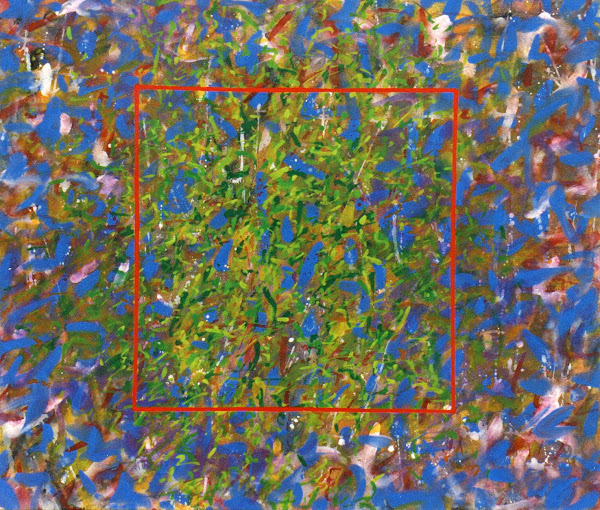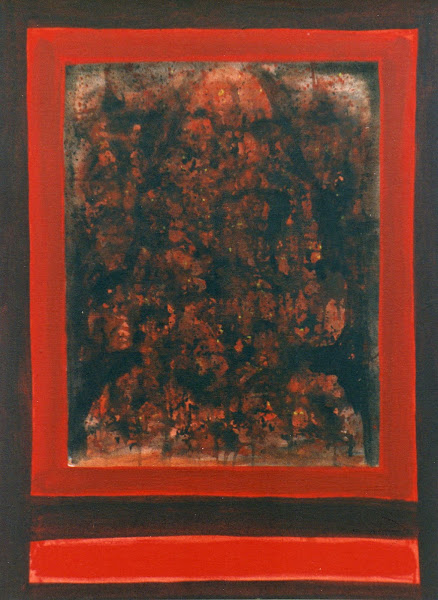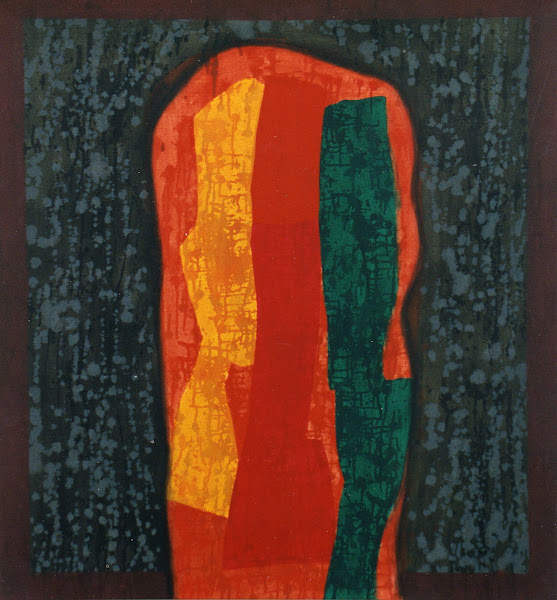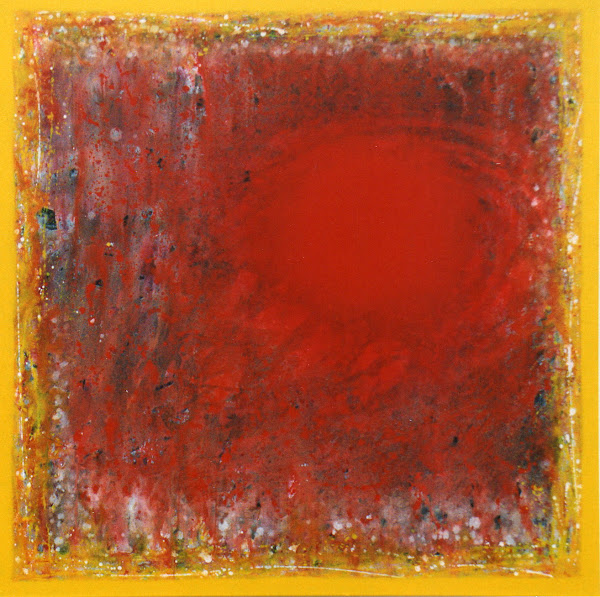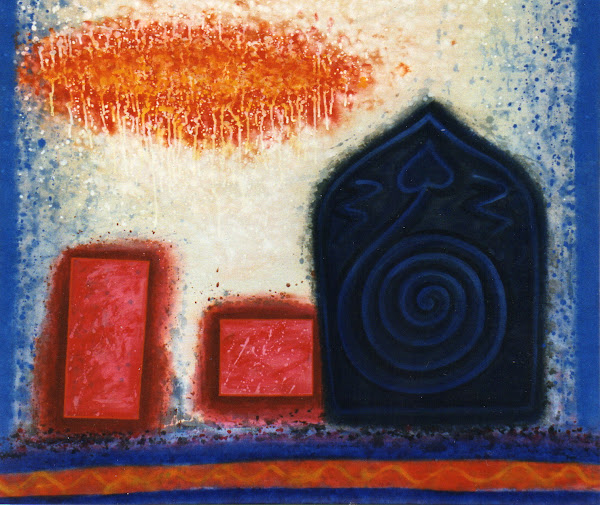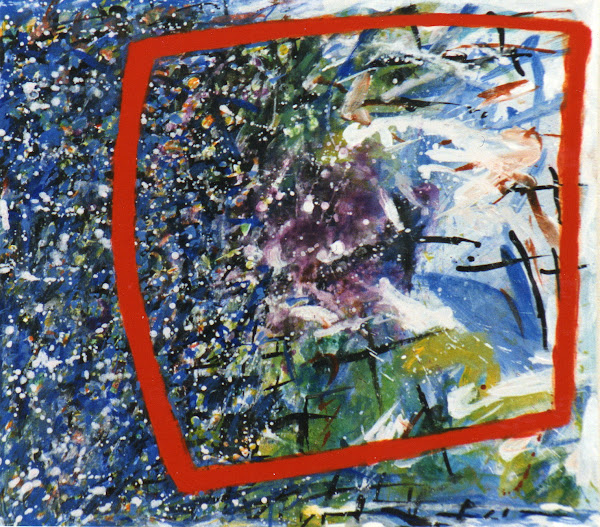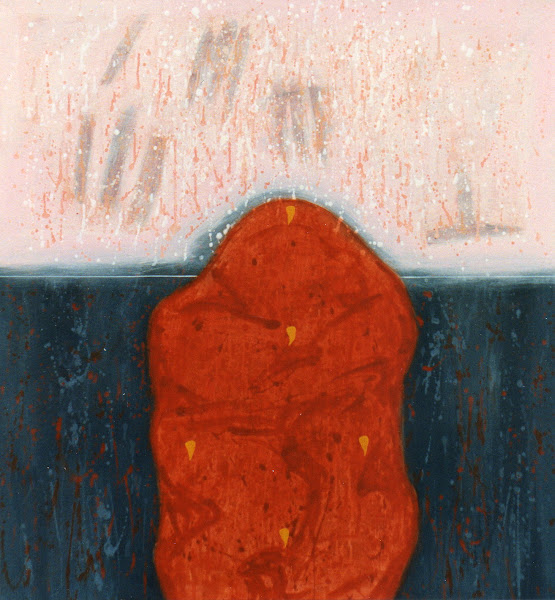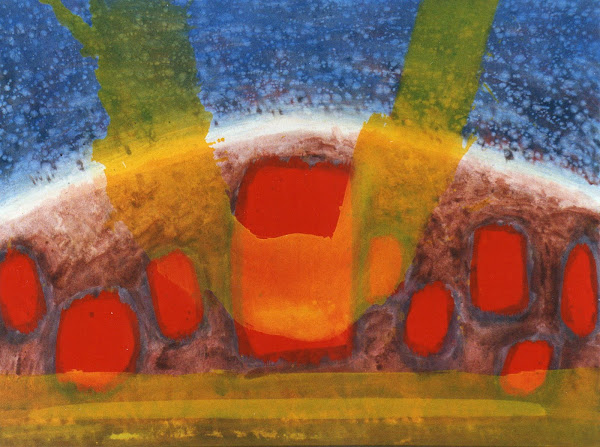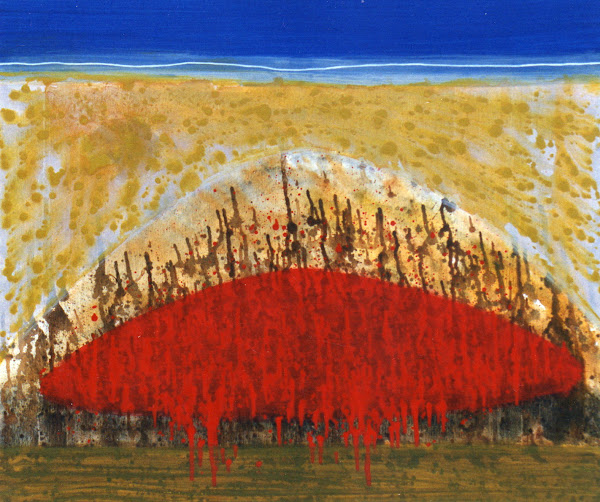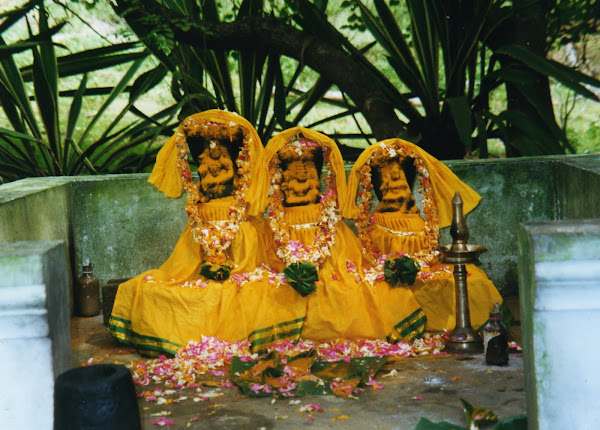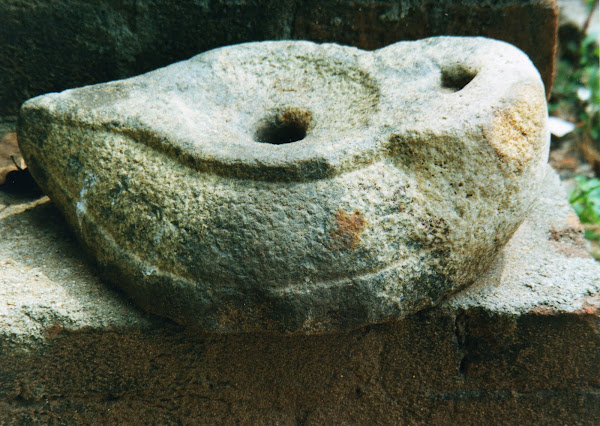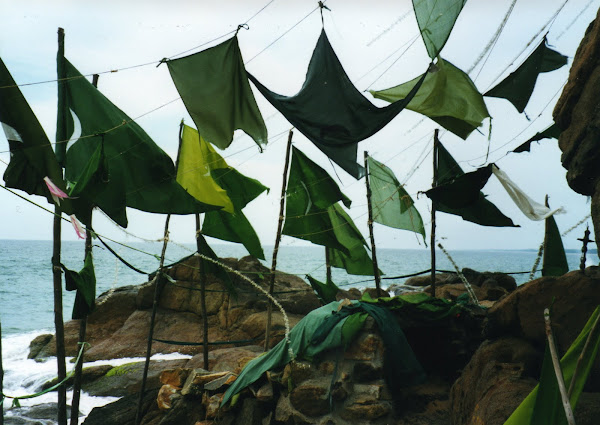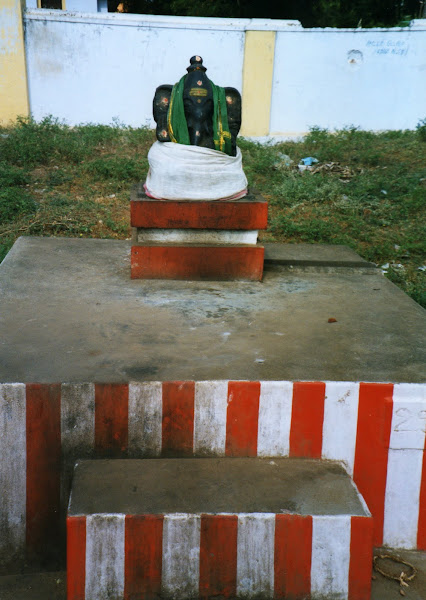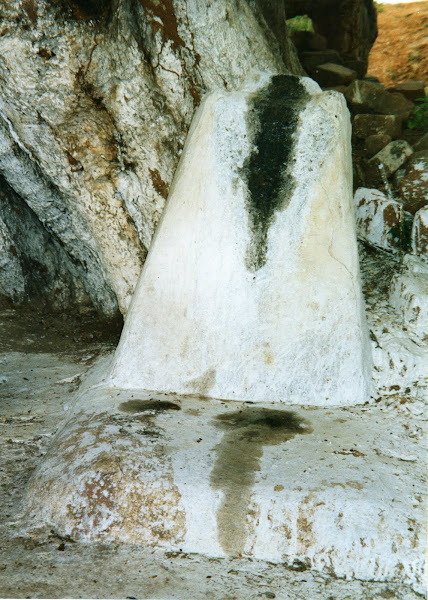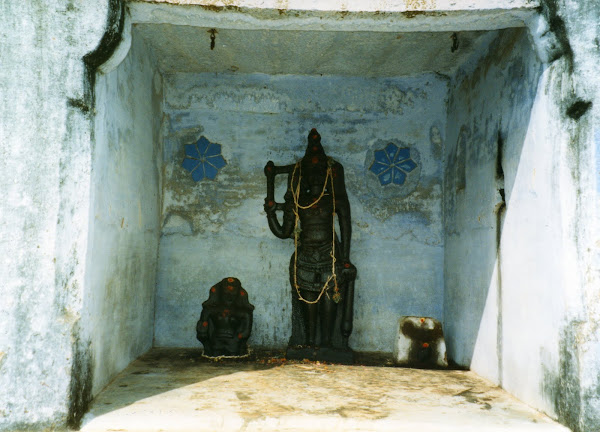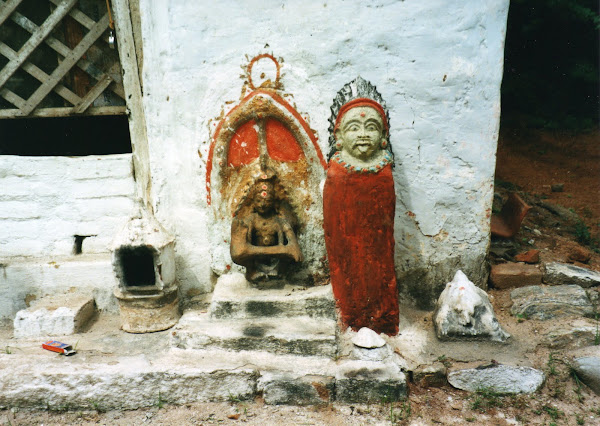Sunday, 2 February 2014
Tuesday, 1 December 2009
I have always been fascinated by the idea of these simple shrines that cover the whole of India. I decided to visit the South, where the world's oldest surviving ritual still exists, the building of a vast fire altar in five layers that represent the sheaths of the soul. The altar is in the shape of a flying bird and is called the building-up of Agni (the god of fire). The ritual is well over three thousand years old. Southern India seemed a good place to start.
I soon found that the whole area was littered with small shrines, each representing aspects of a deity, these shrines and effigies are not worshipped in themselves, but venerated as aspects of the divine, they are pathways to the spirit. They represent access, becoming immersed in libations, offerings of petals, rice, oils, pigments and silver foil. As they disappear under the layers their presence is enhanced, there is feeling of something lying deeper, unrevealed.
There is no place where ritual cannot be observed, however brief, always a chance to venerate the deity, a time to pause from daily toil and look inwards. The shrines can range from a simple stone representing Bhairava or Shiva to intricate carvings of Hanuman or Ganesh, they can be small beehive shaped mounds, a pot on a heap of earth, or a photograph pinned to a wall. The possibilities for self expression are infinite as are the chances for self recognition, hence each is an opportunity for fulfillment or transformation.
The paintings below are a selection from the early nineties, they are adapted from images of these shrines. They later developed into a series based on yogic and meditational images, spirals, Jain diagrams, Yantras and Evocations.
.
Subscribe to:
Comments (Atom)






